Related Research Articles

Embroidery is the art of decorating fabric or other materials using a needle to apply thread or yarn. Embroidery may also incorporate other materials such as pearls, beads, quills, and sequins. In modern days, embroidery is usually seen on caps, hats, coats, overlays, blankets, dress shirts, denim, dresses, stockings, scarfs, and golf shirts. Embroidery is available in a wide variety of thread or yarn colour. It is often used to personalize gifts or clothing items.

The Royal School of Needlework (RSN) is a hand embroidery school in the United Kingdom, founded in 1872 and based at Hampton Court Palace since 1987.

Crewel embroidery, or crewelwork, is a type of surface embroidery using wool. A wide variety of different embroidery stitches are used to follow a design outline applied to the fabric. The technique is at least a thousand years old.
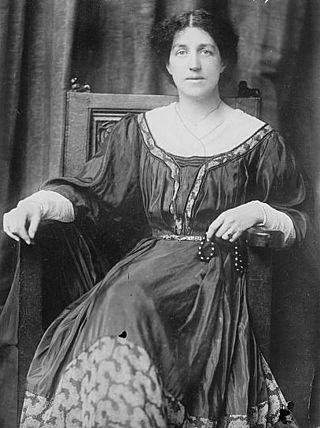
Mary "May" Morris was an English artisan, embroidery designer, jeweller, socialist, and editor. She was the younger daughter of the Pre-Raphaelite artist and designer William Morris and his wife and artists' model, Jane Morris.
The Embroiderers' Guild of America, headquartered in Louisville, Kentucky, is an organization dedicated to "fostering the art of needlework and associated arts." Its members practice any and all forms of needlework, and are dedicated to education and community outreach. EGA has chapters throughout the United States. Chapters are organized into regions. Events are organized at all levels of the organization.
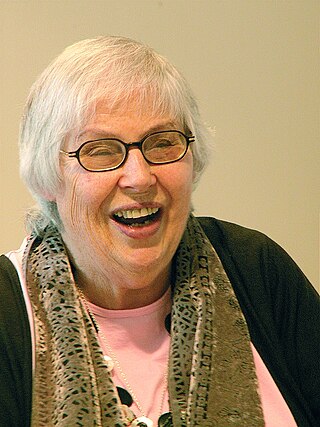
Valerie Campbell-Harding was an experimental textile art designer and author of 24 books.

English embroidery includes embroidery worked in England or by English people abroad from Anglo-Saxon times to the present day. The oldest surviving English embroideries include items from the early 10th century preserved in Durham Cathedral and the 11th century Bayeux Tapestry, if it was worked in England. The professional workshops of Medieval England created rich embroidery in metal thread and silk for ecclesiastical and secular uses. This style was called Opus Anglicanum or "English work", and was famous throughout Europe.

Helen Kathleen Ramsay Whyte MBE (1909–1996) was a Scottish embroiderer and teacher of textile arts.

William George Paulson Townsend (1868–1941) was an English artist, designer, writer and editor.
Caroline Townsend (1854-1889) was an American designer and embroiderer, best known for her design work at Tiffany & Co. and as the principal designer at Associated Artists.
The 62 Group of Textile Artists is an international group of professional textile artists founded in the United Kingdom in 1962. The group is a Constituted Artists Co-operative, focussed on exhibiting the work of its members in the UK and overseas. Membership of the group is achieved through a selection process. The 62 Group requires members to submit work to a selection panel of their peers for every exhibition "If members fail to submit, or are rejected for three successive exhibitions, then membership is forfeited...a policy which ensures that the group consistently produces exciting work." The increased profile of textile art and its evolution in the latter part of the 20th century "has to a great extent been dictated by members of the 62 Group."
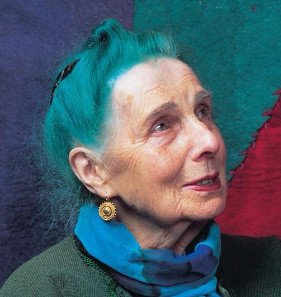
Constance Mildred Howard, later Constance Parker, was an English textile artist and embroiderer who had a profound impact on the development and teaching of those subjects in Britain. The Constance Howard Gallery, part of Goldsmiths, University of London, is named in her honour.

Beryl Dean MBE was a British embroiderer. She was known for rejecting the traditional Victorian designs and for creating her own contemporary embroidery designs.
Louisa Pesel (1870–1947) was an English embroiderer, educator and textile collector. She was born in Bradford, and studied textile design at the National Art Training School, causing her to become interested in decorative stitchery. She served as the director of the Royal Hellenic School of Needlework and Lace in Athens, Greece, from 1903 to 1907. Pesel served as the first president of the Embroiderers' Guild. She produced samplers for the Victoria and Albert (V&A) Museum and cushions, kneelers, alms bags and a lectern carpet for Winchester Cathedral. She collected textiles extensively, and following her death in Winchester in 1947, her collection went to the University of Leeds.
Lilian Margery Dring was a British artist known for her paintings, poster designs and textile designs. needlework and embroidery work.
Margaret Helen Swain was an English embroidery and textile historian. Trained as a nurse in London, she began a career as a historian after noticing no history about Ayrshire whitework embroidery in books following an exhibition at the Signet Library which she visited. Swain's research on the subject resulted in the publication of several books, she held two exhibitions, and wrote about embroidery, household textiles and tapestries in museum journals, magazines and newspapers. She was awarded an honorary Master of Arts degree from the University of Edinburgh in 1981. A pencil portrait of Swain was made by Elizabeth Blackadder and a collection of papers and objects related to her career are stored at National Museums Scotland.
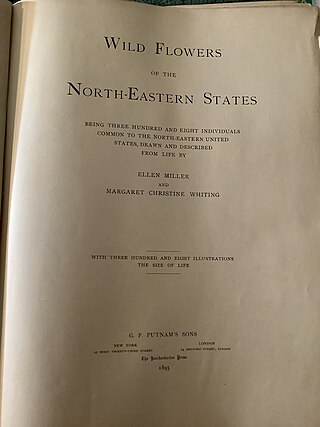
Margaret C. Whiting (1860-1946), was born in Chester, Massachusetts but lived much of her adult life in Deerfield, Massachusetts. She trained as an artist, and published an illustrated book with Ellen Miller on wild flowers. She ad Miller co-founded the Deerfield Society of Blue and White Needlework, where she contributed her skills as a designer and teacher, and provided leadership for the organization. She won a gold medal for her needlework from the 1915 Worlds Fair in San Francisco for its design and color.
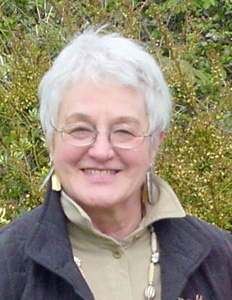
Audrey Walker was an accomplished textile artist, embroiderer and teacher, who was active from the 1970s and 1990s in United Kingdom. Walker became known for developing an innovative style of embroidery based on fine threads applied by machine and by hand, to create striking figurative wall-hung works of art. Walker described her work as evolving from fairly fluid ideas, and the process as being akin to drawing with fabrics.
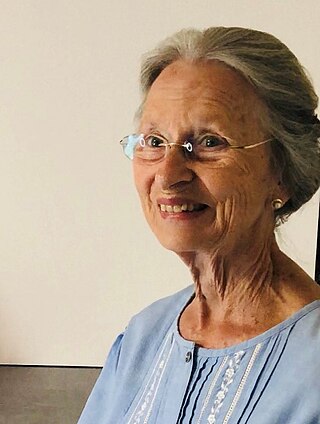
Diana Springall is, according to the Victoria and Albert Museum, "amongst the most well-known of all British textile artists", who has been committed to raising the profile of the contemporary art of embroidery through the Diana Springall Collection. Her work is found in many private and public collections worldwide. As well as creating art and teaching, Springall has held various appointments including chair of both the Embroiderers' Guild and the Society of Designer Craftsmen. Throughout her career, Springall has campaigned for the promotion of embroidery as a true art form. She has assembled the Diana Springall Collection, an extensive collection of contemporary pieces from various artists showcasing embroidery as fine art.
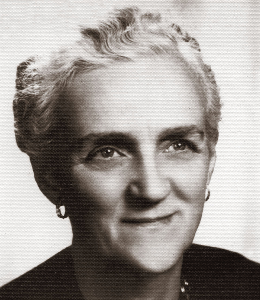
Margaret Oppen born Margaret "Daisy" Arnott was an Australian artist, correspondent and embroiderer. She founded the Embroiderers' Guild branch in New South Wales. Her letters to her mother have been published as "Letters from Daisy".
References
- ↑ Berry, Chris (27 Mar 2013). "100 years of the Guild" (PDF). Embroiderers' Guild.
- ↑ Grahame, Rachel, "Margaret Oppen (1890–1975)", Australian Dictionary of Biography, Canberra: National Centre of Biography, Australian National University, retrieved 2024-02-12
- ↑ "Margaret Oppen Competition 2017". www.embroiderersguildnsw.org.au. Retrieved 2024-02-12.
- ↑ Beaney, Maries & Walker in Millar, L. (ed.) (2011) Radical Thread. The 62 Group 1962-2012. Tunbridge Wells: Direct Design Books
- 1 2 3 Conlan, Tara (5 March 2021). "Embroiderers' Guild members stick needle in over 'fait accompli' changes". The Guardian. Retrieved 9 May 2022.
- 1 2 3 4 5 6 7 8 Williams, Claudia (30 March 2021). "Ripped at the seams". Tortoise Media. Retrieved 9 May 2022.


